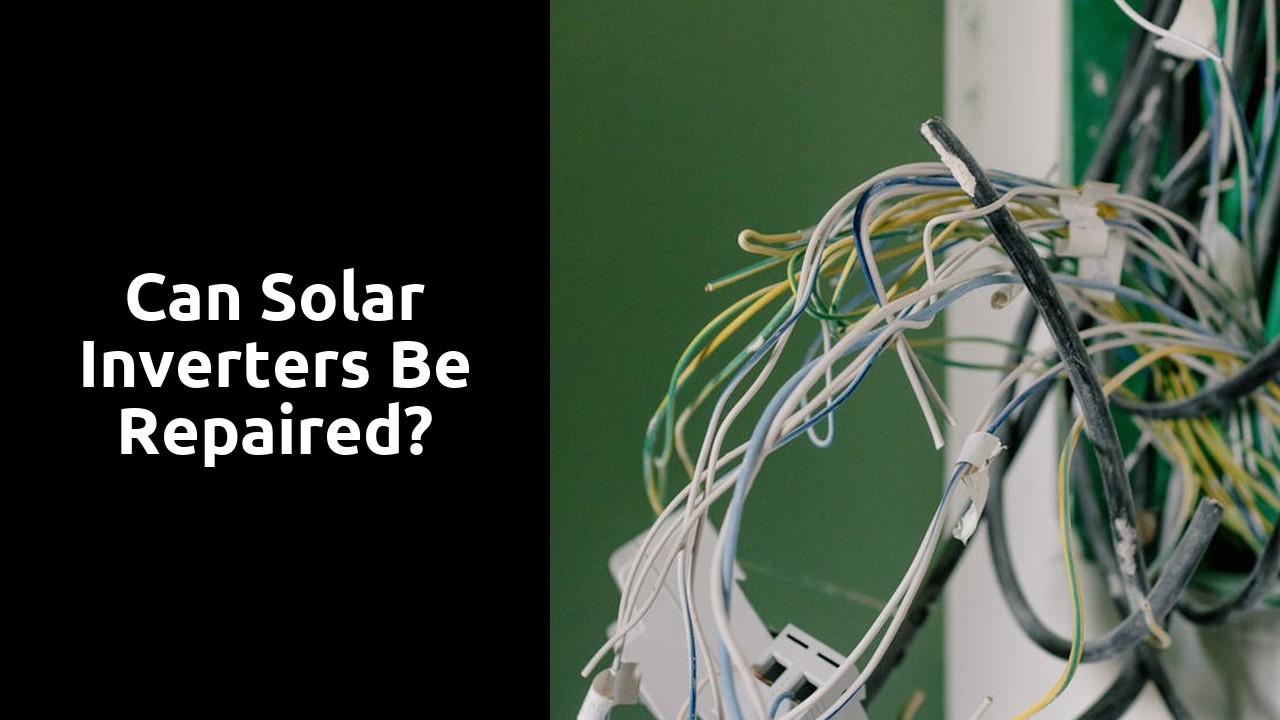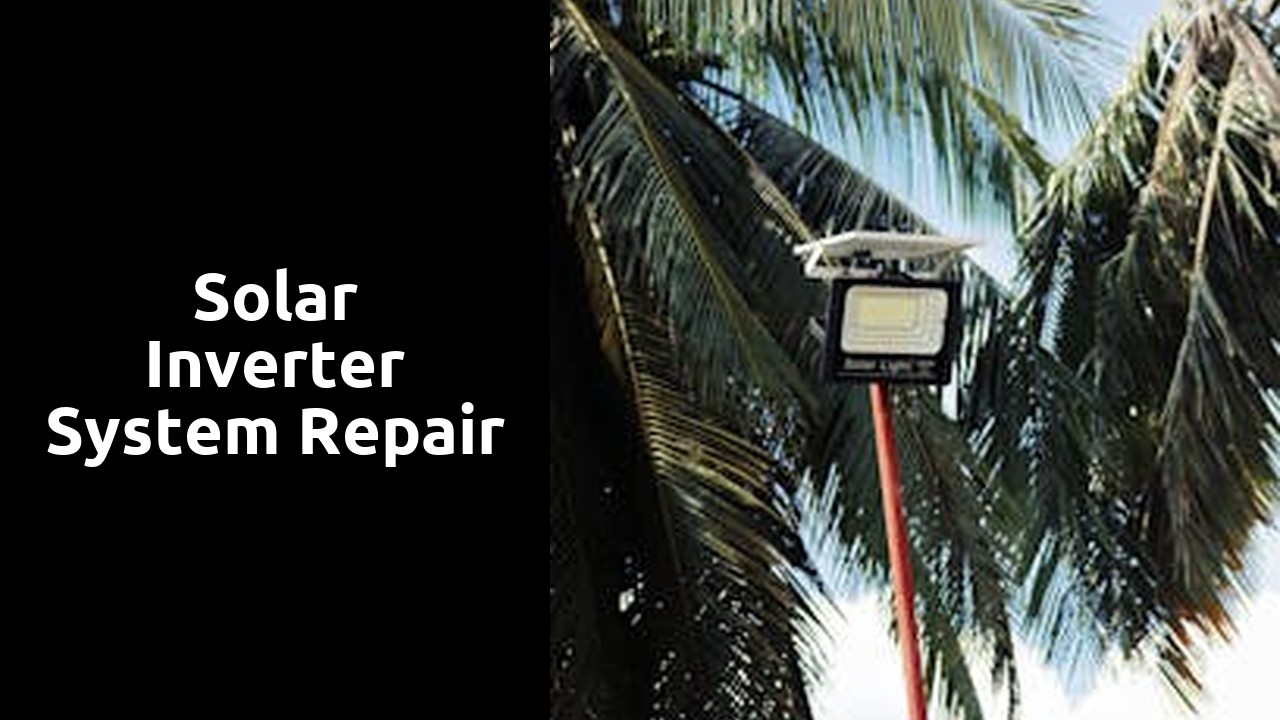
Table Of Contents
The Repair Process for Faulty Solar Inverters
Repairing a faulty solar inverter system involves a systematic approach to diagnose and address the issues affecting its performance. The initial step in the repair process is to conduct a thorough inspection of the inverter to identify any visible signs of damage or malfunctions. This inspection includes checking the internal components, wiring connections, and overall condition of the inverter to pinpoint the source of the problem accurately. Once the issue has been identified, the next phase of the repair process entails acquiring the necessary replacement parts or components required to rectify the faults within the solar inverter system.
After procuring the replacement components, the repair technician will proceed to dismantle the inverter to access the faulty parts that need to be replaced. Careful attention is paid to the disassembly process to prevent any further damage to the inverter during the repair. Once the damaged components are replaced with new ones, the repair technician will meticulously reassemble the solar inverter system, ensuring that all connections are secure and the components are correctly aligned. Finally, the repaired solar inverter system undergoes comprehensive testing to validate its functionality and efficiency before being reinstated for operation.
Steps Involved in Repairing Damaged Inverter Components
Repairing damaged inverter components is a crucial aspect of maintaining the efficiency of a solar inverter system. The first step in the repair process involves conducting a thorough inspection to identify the specific components that have been damaged or are malfunctioning. This inspection may require the use of specialized tools and equipment to accurately diagnose the issue.
Once the damaged components have been identified, the next step is to carefully remove and replace them with new, functioning parts. It is important to follow manufacturer guidelines and specifications when replacing components to ensure the integrity and performance of the solar inverter system. After the replacement is complete, thorough testing and checks should be conducted to verify that the system is operating correctly post Solar Inverter System Repair.
Warranty Coverage for Inverter Repairs
When it comes to warranty coverage for Solar Inverter System Repair, it is essential to understand the policies set forth by manufacturers to ensure that you are well-informed. Manufacturers often provide different levels of coverage for inverter repairs, and it is crucial to review the terms and conditions outlined in your warranty agreement to know what is included. Some warranties may cover parts, labor, and even shipping costs, while others may have limitations on the types of damages that are eligible for repair under the warranty.
Moreover, manufacturers typically have specific procedures that need to be followed when requesting warranty repairs for solar inverters. It is advisable to contact the manufacturer or the supplier of the inverter directly to initiate the repair process and get detailed instructions on how to proceed. Understanding the warranty coverage for inverter repairs can help you make informed decisions when faced with issues and ensure that your solar energy system continues to function efficiently.
Understanding Manufacturer Warranty Policies for Inverter Fixes
Manufacturer warranty policies play a crucial role in the realm of Solar Inverter System Repair. It is essential to carefully peruse and comprehend the terms and conditions stipulated by the manufacturer to ascertain the extent of coverage provided for inverter fixes. Manufacturers typically offer warranties that cover specific components or the entire inverter system for a designated period. Some warranties may also encompass the cost of labour and parts required for repairs, while others may have limitations on the types of faults that are eligible for coverage.
Before proceeding with any repairs or maintenance on a faulty solar inverter, it is imperative to refer to the manufacturer's warranty guidelines. Understanding the intricacies of the warranty policy can help determine whether your inverter is still under warranty and if the identified issue aligns with the manufacturer's coverage terms. In instances where the warranty is void or has expired, exploring alternative repair options or seeking professional advice from a certified technician becomes imperative in ensuring the effective functioning of your solar energy system.
Upgrading vs. Repairing Solar Inverters
When faced with the decision between upgrading or repairing a solar inverter system, evaluating a few key factors can help in making an informed choice. Firstly, consider the age of the inverter and whether it is still covered under warranty. If the inverter is relatively new and covered, opting for a repair may be the most cost-effective solution. However, if the warranty has expired or the inverter is outdated, upgrading to a newer, more efficient model could be the better long-term investment to enhance the overall performance of your solar system.
Another crucial consideration is the extent of the damage or fault in the inverter. If the issue is minor and can be resolved through Solar Inverter System Repair without compromising the efficiency and safety of the system, repairing may be the convenient choice. On the contrary, if the damage is significant or if multiple components are failing, investing in an upgrade might provide a more reliable and durable solution in the long run. Ultimately, weighing the costs, benefits, and future performance enhancements offered by upgrading against repairing can help in determining the most suitable path forward for your solar inverter system.
Factors to Evaluate When Deciding Between Upgrades and Repairs
When faced with the decision of whether to upgrade or repair a solar inverter system, several factors warrant consideration. Firstly, evaluate the age of the inverter. Older models may be reaching the end of their intended lifespan, making an upgrade a more cost-effective and efficient choice in the long run. Additionally, take into account the extent of the damage or fault in the inverter. If the repair is minor and easily fixed, it may be more economical to opt for a repair rather than a full upgrade.
Moreover, consider the advancements in technology since the installation of the current inverter. If newer models offer improved efficiency, added features, or better compatibility with your solar setup, it might be beneficial to explore the option of an upgrade. On the other hand, if the existing inverter suits your current energy needs and the repair can restore it to optimal functioning, repairing the solar inverter system may be the most pragmatic choice.
FAQS
Can solar inverters be repaired?
Yes, solar inverters can be repaired in many cases rather than having to be completely replaced.
What is the process for repairing faulty solar inverters?
The repair process for faulty solar inverters typically involves diagnosing the issue, replacing damaged components, and retesting the inverter to ensure it is functioning properly.
Are damaged inverter components repairable?
Yes, damaged inverter components can often be repaired by skilled technicians who can identify the problem and either fix or replace the faulty parts.
Is warranty coverage available for inverter repairs?
Warranty coverage for inverter repairs varies depending on the manufacturer and the terms of the warranty. It is important to understand the warranty policies before seeking repairs.
When should one consider upgrading rather than repairing a solar inverter?
Factors such as the age of the inverter, the cost of repairs, and the availability of new technologies should be evaluated when deciding between upgrading or repairing a solar inverter.
